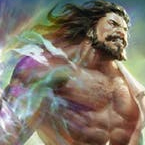Bravo has been out for like three and a half years now, and some people (cough cough, literally us at the Rathe Times) have the audacity to call him a B-tier hero in today's meta. And I am here to... not fully disagree, actually. But if he's not the best in the business, why do I keep pulling wins with him... and why do I think that you can too?
I want to take some time to discuss why you need more Bravo in your life; how to play Bravo and take wins; and finally, I want to demonstrate the tools I use to construct Bravo decks.
Get More Bravo in Your Life
The Full Package
Bravo was one of the first four heroes in the game, and I think that there are several reasons for that. Welcome to Rathe had a huge job to do - and frankly, it's still serving that role. WTR is the on-ramp point for so many players, even today. The new sets are cool, but the old sets are still legal... and jammed with power. Whether you are a collector or player, new or old, there are some real gems in those packs, and the unlimited versions are still at or under suggested pricing. Welcome to Rathe also had to show what the game was capable of... without showing off the whole kit and caboodle, of course.
Flesh and Blood is built on Four Design Principles, as given to us by game development themselves. I tell you, reader, that Bravo brought all the principles to bear in his design.
- Start at Full: Bravo has access to loads of strong equipment, including the unique-to-class Shield off-hand.
- Reduce Variance: The hammer weapons alone reduce variance by bringing the baseline turn of a given Guardian deck up from relying on drawing attack action cards to attack the opponent.
- Reward Good Decisions, not Luck: Bravo decks Reward Good Decisions in deckbuilding - and during play. The high cost of his best attacks compel the player to run more blue cards - and it helps that a good number of powerful cards happen to be blue.
- Every Card Counts: Running the right quantities of the right kinds of cards makes an absolutely huge difference in how the game plays out, and making the right decisions in deckbuilding makes a massive an impact on what kinds of turns are even available to the Bravo player. When Guardians transition to the late game with a deck that's still flush with options, it becomes apparent how proper pitching and valuation of attack action card vs. weapon truly matters.
Flashy and Fierce
But even if Bravo exemplifies these elements, they're true of the game as a whole- and it needs to be said that... Bravo is just cool, and kinda goofy. Maybe the 'hairy-chested, popped-collar circus guy' look isn't your thing, but I submit to you that appearances are not what make or break the deck's coolness. In my experience, Bravo is capable of some of the coolest "wAiT, WhAt?" plays in the game. Let me illustrate a few turns for you:
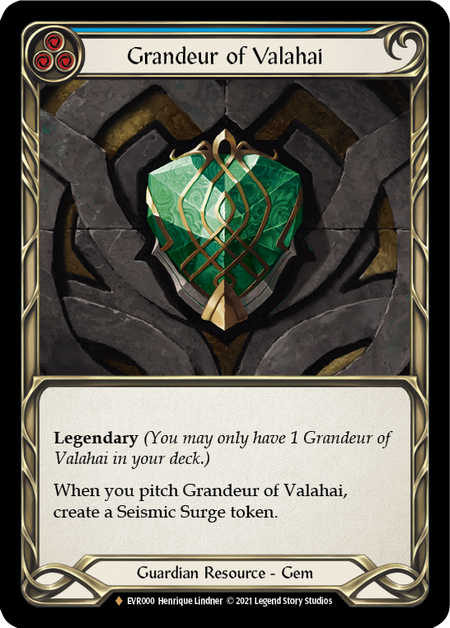
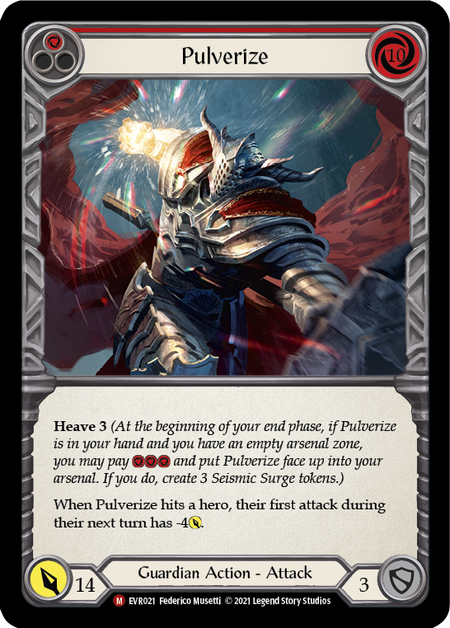

Turn one Showtime, find Pulverize, heave Pulverize with Grandeur of Valahai, pass.
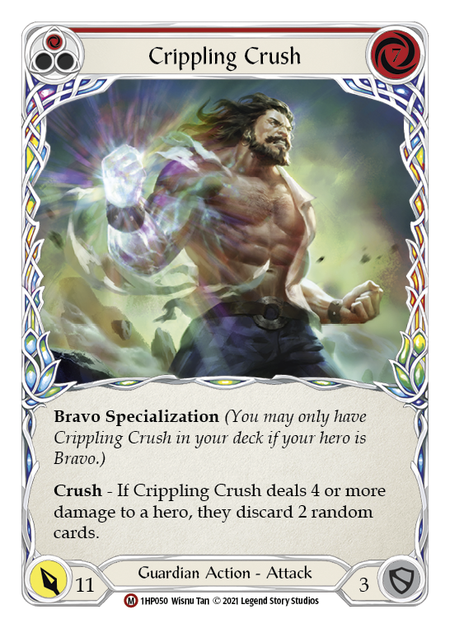


Crippling Crush, next turn Spinal Crush with Pummel, next turn dominated Rouse the Ancients plus Chokeslam.
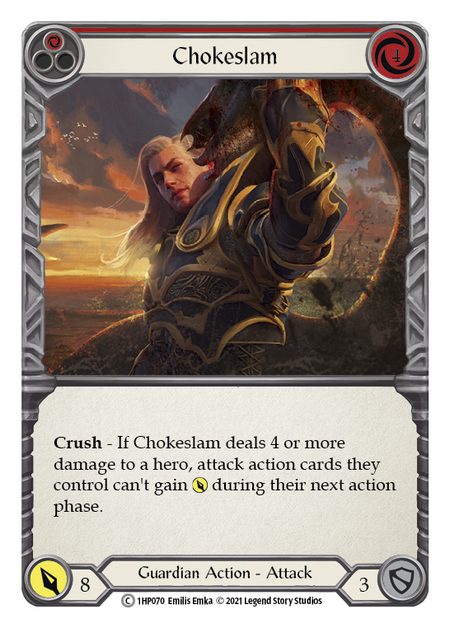
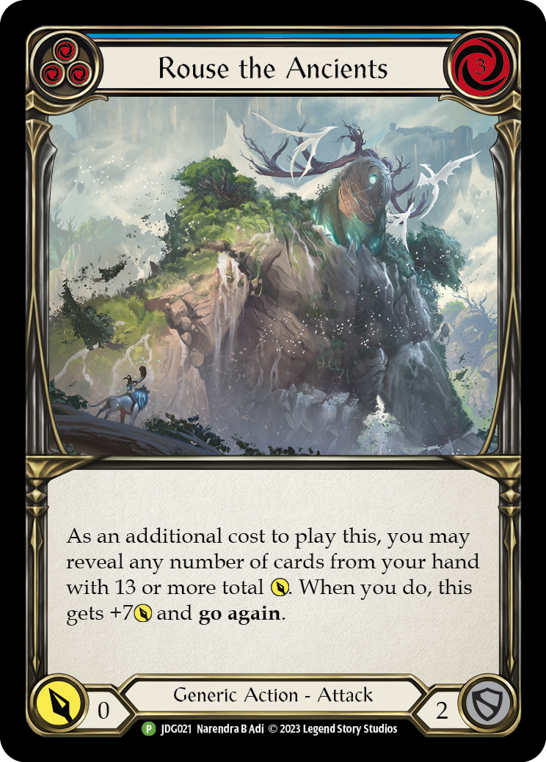
Towering Titan, block with all of the armor you've been saving this game, and then Tear Asunder + Righteous Cleansing.
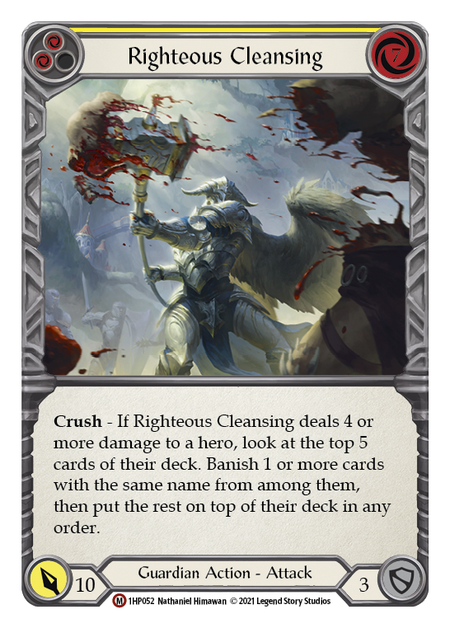
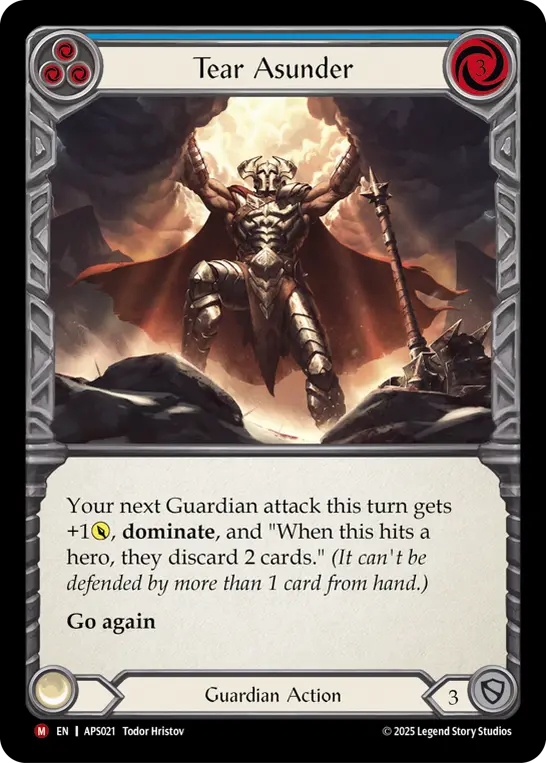
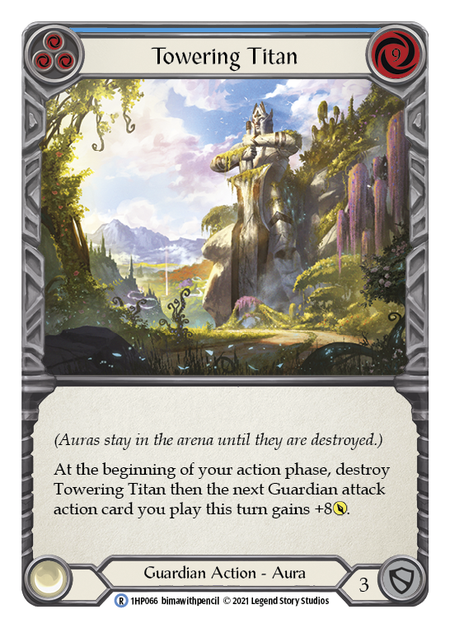
It's just one big turn after another, and it's... pretty satisfying. Even just revealing a Pulverize to satisfy the conditions to Rouse the Ancients can be a pretty funny moment in a game of Flesh and Blood - like, let the ancients rest! You don't have to rouse them; You're already gonna hit me for 14, sweet Jesus!
Bravo lives up to the name, is what I'm saying. He stops the show.
An Evergreen Hero
One thing that I like most about Bravo, as a long-time card game player, is that his cardpool and playstyle is timeless. He is, at the core, a midrange hero. He is always good in the meta - it's all a matter of execution.
That's not just an evaluation of where he is in 2023, that's what I think is true about Bravo in general. In fact, I think we can say that this is a core aspect of the Showstopper. He is not quite capable of the deeply defensive position that Oldhim is; not able to reach the setup heights of Iyslander; nor can he match the speed of Fai or other aggressive heroes. He's not going to kill you in one single turn from full life. He cannot be considered a fully aggro deck, a fully control deck, or a fully setup style deck.
Bravo instead is a midrange hero, with unique access and lots of options. A hero who can be geared over and over again to answer your meta. Every step that he takes towards answering one corner of the meta, however, may just leave him exposed to another - the game is well crafted, after all!
We wouldn't want a hero that only has great matchups, but it's satisfying to have a hero with a few good ones, a few bad ones, and basically no terrible ones. I hate blaming my tools for my wins or my losses, and Bravo puts a lot of the control for my outcomes back in to my hands. Through careful deck construction and playing the best games of our lives, though? We can turn some heads and stop the show. We can't rely on having the best deck or having the best combos, instead a huge amount of whether we win or lose is dependent upon how we play the game. Get in the practice, and the wins do follow!
Surprisingly Flexible, for a Big Guy
You know the phrase, “A jack of all trades is a master of none”? This may well be true, but did you know the other part of the phrase- that the jack of all trades is better than a master of one? It takes a lot of experience to be a successful polymath, though. Each of those plates has to be kept spinning. You can't just waltz in to a new meta and play the same old stack of cards. No, for this trick to work, you have to be paying attention.
In this game, good decisions are rewarded more than luck - and I submit to you that Bravo is the proof. It takes a lot of plays and a lot of tweaking. In a way, a good Bravo deck is a constant act of deckbuilding and deck re-building. Cards come in and cards come out, play styles are adopted, abandoned, reincorporated, shifted - cards reveal themselves like gems to the trained eye. So much sapphire, some speckles of ruby. (Funny, really, that Grandeur of Valahai, the literal Guardian gem, is the least faceted of them all, strumming a single note in the chorus of cards: pitch me for 3, get a Seismic Surge.)
Even a card like blue Unmovable shines as you turn it over in your hand. Blue Unmovable can be pitched for 3, fueling a hammer with its heft, blocked with from hand, arsenaled for better value; it can be played early to prevent damage, or savored so that it lines up perfectly with the opponent's, let's say, Tiger Swipe, or a Crippling Crush of their own.
Bravo is a blast to play. Let's talk about how it's done.
Bravo Basics
In many ways, how you play Bravo changes depending on the matchup - and in just as many ways, it seems, the way you play Bravo stays the same. You run all the same cards, but use them in different ways in order to achieve victory. Honestly, it's kind of impressive in terms of design.
Trusty Hammer

The 3 main things that you do with Bravo are swing the hammer, defend, and send big attack actions. Since Anothos costs 3 to swing, yet wants to see two 3+ cost cards in the pitch zone in order to come across for maximum effect, we have to manufacture ways for this to happen. Pitching a single blue card isn't going to cut it, as we need at least two cards in pitch. When you attack with Anothos, if you can, try to pitch a red or yellow card first. By doing so, you will need to pitch a second (or third!) card in order to attack. You can only pitch when you do not presently have enough resources available for your pending action, but by carefully pitching cards in the right order we can get Anothos to send 6 damage instead of 4!

Another way to do this is to activate Tectonic Plating before attacking with Anothos. This combined cost of 4 will necessitate the pitching of at least 2 cards for Bravo, thereby affording Anothos that extra damage. Not only is attacking for 6 pretty decent, it doesn't cost us any cards out of our deck, and puts one or two cards on the bottom of our deck in the order of our choosing.
Stacking the Deck
This brings us to pitch stacking- a concept that seems to be a bit of a boogieman to newer players, but I assure you that pitch stacking with Bravo is very color-by-numbers. In fact, I recommend Bravo to anyone who wants to get better, or at least more familiar, with pitch stacking. For Bravo, the method is actually quite simple: try to pitch a red card, then three blue cards, then a red card, then three blue cards, and so on and so on. This way, when you get back to where you started pitch-stacking (generally as early as turn 16, if you've been stacking since turn 1), you have access to a red threat and 9 resources to make it happen with. You don't really have to memorize what the red card is, or what the blue cards are: just so long as you keep putting red attacks sandwiched between blue pitch cards, you should be golden once you start drawing in to those hands.
If you can't quite line up the pitches to stack smoothly, just block with those to get them out of their clunky positions taking up space. You will typically find yourself blocking with 2 or 3 cards on most turns, so it's good that we can readily convert 1- and 2-card hands into 4 or 6 damage (the hammer) without even losing cards out of the deck.
Avoid Attachments
One final piece of holistic wisdom that we Guardian players use: never bleed unnecessarily. No hand is so good, no turn so tempting, that the Bravo player should take a bunch of damage. It is often a difficult decision to block with our powerful and limited red cards, but there's no point in keeping them if we lose the game from slowly bleeding out. We have to pivot and dance with our opponent, only taking the damage we must in order to still have turns while stifling our opponents multitudinous attempts to kill us. It is almost always proper to pay for nullrune equipment, and if we're lucky we can even use that stuff to help pitch stack as well.
Flexin' on your Opponent
But that's the generic stuff, the sort of skills and plays that always come in to Bravo. Let's get in to particulars. As a midrange hero, Bravo has to make use of all of his options to get victories across the table. Against Fai and other aggressive builds, he leans in to a defensive position. Against certain builds of Iyslander and other setup style decks, he shifts into aggro. When facing defensive decks, he has to go setup himself. The trick is fitting it all in to one decklist, and not letting each piece overpower the core concepts!
Holding Down the Heat
Against aggro heroes, there are a few options available to us in the form of defense and offense. Defensively, there are loads and loads of defense reactions, both generic and Guardian-classed. We also have a large number of cards that block for 3 as opposed to 2, increasing our basic defense value across the board. Since aggro heroes tend to rely on attack action cards, we can also fatigue them by just blocking their attacks efficiently and not taking enough damage to perish before they run out of gas.
Offensively, there are on-hit effects on our Guardian attack action cards that can stop aggro players cold. Chokeslam can really hinder any deck that tries to make offensive use of art of war; Crush the Weak stomps on go-wide strategies that send tiny attacks in droves; Cartilage Crush completely messes with the mathematics of aggro just like a frostbite token does.
Breaking Their Control
Versus Control hereos, we go setup. It's not just about pitch stacking and drawing into perfect hands; at this point, it's about doing things that they can't deal with. If they are sending huge dominated attacks, we need to have the armor and defense reactions ready in hand and arsenal in order to stop them. We need to efficiently try to get to an endgame where our offense is too perfectly woven to be outdone by their defenses.
Cards like Seasoned Saviour, Reinforce Steel, and Towering Titan make a big difference in these matchups, as they can allow us to successfully set up a board state where the opponent loses. You need a huge buffer of life, and you have to spend at least one turn prior to execution in order to successfully play it out. My combo of choice is Pulverize and Towering Titan. The Pulverize, or Towering Titan, has to be in arsenal, and the other card must be in hand when playing the Towering Titan. Following that, at least three blue cards have to get drawn - and preferably, 4 of them.
In the control matchup, the play is to overwhelm the opponent... just not quickly. It takes a lot of setup to pull off turns like that, but they often do lead to the defender using a lot of defense reactions and still bleeding out.
Wrecking their Plans
When facing setup heroes, I tend to turn to cards like Zealous Belting, Out Muscle, Enlightened Strike, that sort of thing. (You can read up on staying light on your feet with Snapdragon Scalers in last week's article.) Setup decks need time to get to where they are going, and we do our best by not giving them enough time to get fully set up. By the time Iyslander has 3 Frost Hexes on you, the game may well be lost already. Don't give up hope, of course, but do pay attention to the writing on the wall - so it's important to race them down before their end-game combo is entirely assembled.
Deckbuilding Blueprints
There is a lot of consideration that goes into the building of Bravo; and even though the ratios and selections might appear simple, I assure you that nearly every slot is in contest and consideration as the meta shifts and evolves. Some cards seem to be staples in their own right, like Tear Asunder, but every card influences other selections, so let's get to it from the ground up.
The Basics
The place where I nearly always start in deck construction is with equipment. If you have access to all of the equipment, then the standard loadout that I like to bring is Tectonic Plating, Crater Fist, Crown of Providence, and Ironrot Legs - alongside Nullrune Boots, Gloves, and Hood. If I can get away with it, I only bring Anothos as a weapon, which puts my standard equipment loadout at 8 pieces. I have gone as high as 10 pieces before, however.

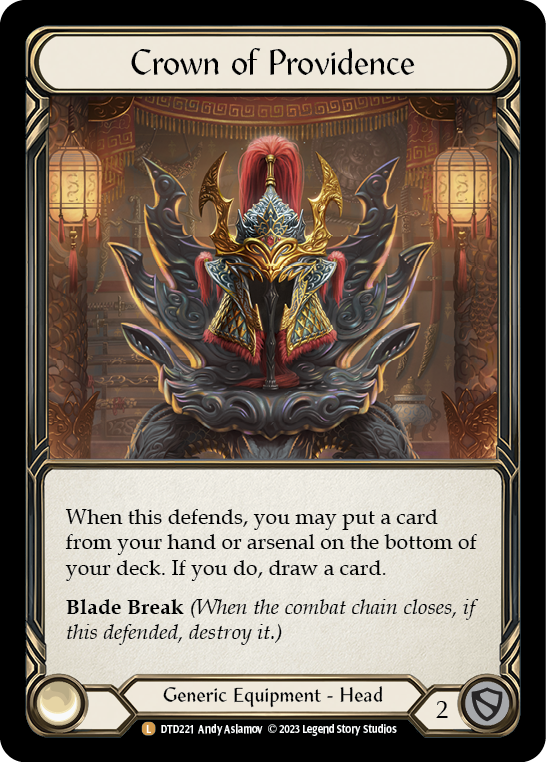
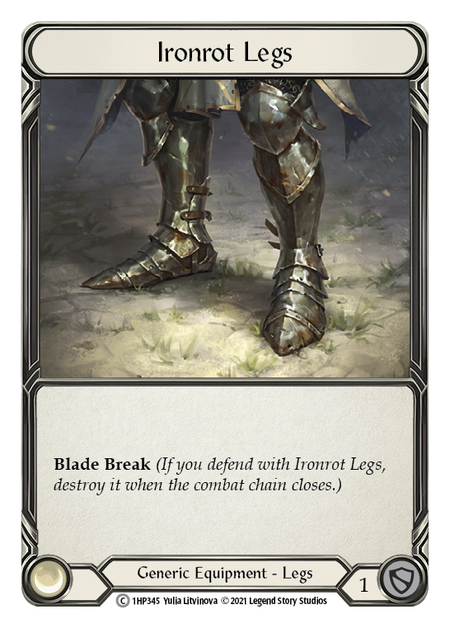
With the 8-equipment loadout, we have 72 cards to play around with. There is wisdom in different deck sizes, so let's talk about that.
If you are playing a matchup where you need to lean in to fatigue to win, you will want to have a stack of cards that can all be run cohesively and together. A good deal of the time, what this means is making sure that there are enough blues in the deck to support us both running all 72 cards and not always drawing terribly unbalanced hands. I try to run at least 40 blues with 32 non-blues in my Bravo decks for exactly this reason, so that I start off drawing blues 20% more frequently than drawing non-blues, and therefore still capable of drawing into hands that can take advantage of openings in the opponent's gameplan. If the opponent stumbles and we just drew into three blues with a Crippling Crush? It might just be time to send that a little early and forego the pitch stacking.
The rest of the time, we may want to be running a deck size closer to 60, giving us more consistent access to our deck and its tricks, as well as reducing the size of the clock on our pitch stack. Drawing into perfectly stacked hands in 14 turns is noticably faster than doing it in 17 turns, which is exactly what we are looking at with a deck of 60 vs a deck of 72.
Putting all of this together, the ratio that I tend to work with looks like this:
40 blues + 30 reds/yellows + 10 equipment
I have run as many as 43 blues before, and I liked it just fine - but I try not to run fewer than 40 blues. I tend not to run more than 10 equipment if I can help it, but sometimes one or two pieces of equipment can make a huge difference in a matchup.
That leaves us with 30 red or yellow cards to play around with, and that's where things start to get advanced. I pretty much always find room for Crippling Crush, Spinal Crush, red Pummel, a single Remembrance, Sink Below, and Fate Foreseen - and that's half of the cards already!
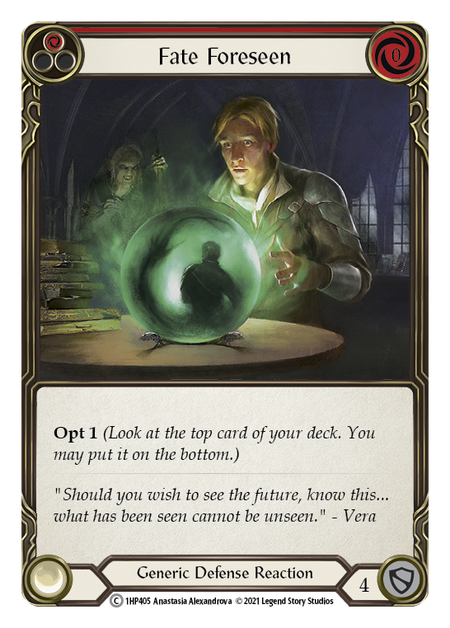
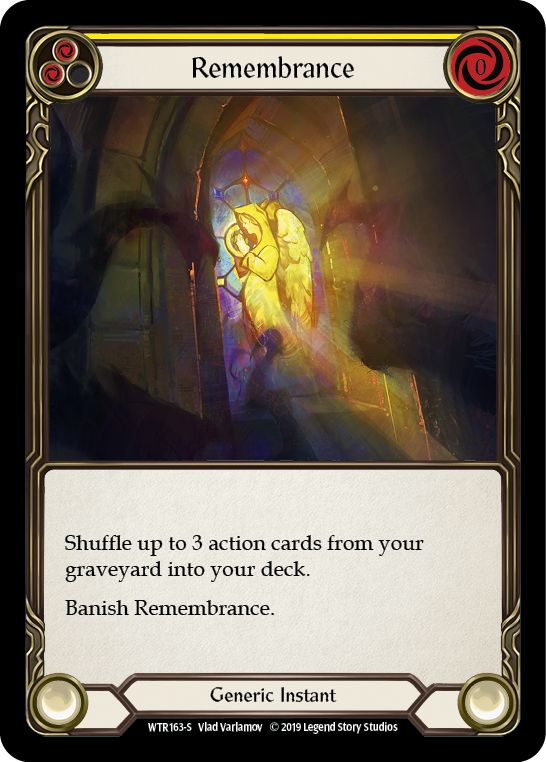
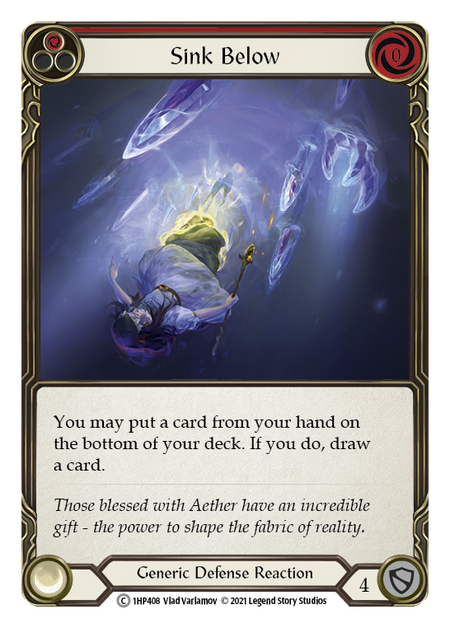
We could fill in those slots with go again options, like Zealous Belting; or defensive options, like Steadfast or Oasis Respite; or even control-focused on-hit effects like Pulverize, Command and Conquer, and Erase Face. In a way, it kind of comes down to this: you should play the cards that you want to play in those slots.
Advanced Concepts
In this part, we want to cover the ins and outs of card selection for Bravo. We won't be going over absolutely every card, as there are far too many, but what we can do is identify some options and talk about making it all work together.
First and foremost, we need to consider the meta. We have to look at what decks we anticipate playing against at the tournament we are preparing for, and then include cards to play against those decks accordingly. If you have the good fortune of playing a tournament with friends, colleagues, or a simply “known” meta, then the process gets a lot easier. But what if you don't necessarily know what meta you are walking into?
I tend to make use of fabdb and the deck page, a lot. As I prepare for Pro Quest season, I'm looking at all the decks that have been submitted lately, paying special attention to decks that are tagged as competitive or from a tournament. I sort them by popularity, too, to see what lists have been gaining lots of attention. Lately I've seen Fai, Dromai, Iyslander, Dash, Lexi, and Oldhim show up as decks with no small amount of iterations or testing: these will likely be the decks that we see going in to an unknown meta. We can't say for certain that any one of them will show up on tournament day, but we can say this: those decks are popular, and they are tuned. Some players will be playing these lists exactly, and as such we can include options against them.
If you do, however, know the majority of the decks and players at the tournament, then you can flex your list a little bit differently, according to who and what is likely to be there. If there aren't any Wizards around, you might instead go with one fewer nullrune equips; and if on top of that there aren't any Rosetta Thorn-in-yer-side Runeblades, then I might suggest cutting nullrune altogether. In fact, looking at this meta, I've considered that, if I can't get my Iyslander games into a comfortable win rate, I might just cut parts of my go-again package and the third nullrune, freeing up spaces in the sideboard to better secure other matchups in the meta that I am afraid of.
It always, always, comes back to: what decks are you likely to face at the tournament, and what can you do to stop/beat them. I'm bull-headed (and invested), so I always try to bring it back around to my guy Bravo, and I know that there's an answer in the card pool for a multifaceted hero like Bravo. If we were just going to concede our Iyslander matchups, why even travel for a tournament? So, really, the answer is to run cards that answer lots of different matches, especially those that you suspect you will run into.
Of course, we cannot bring in every card from our dream-board: we have to pare it down to fit in the limit of 80. Cards have to fill multiple roles, and every card should count. A good rule of thumb is that, if the card doesn't get presented against more than one opponent, probably don't include it.
(Now, if you anticipate facing a dozen or so of the same hero back-to-back the way that Horspool faced Chanes at 2021's Las Vegas Calling, maybe do include a card that's only good in to that one matchup.)
Some cards, when included, impact how we have to construct the rest of the deck. If we want to include go-again options in our Bravo lists, one of the cards to consider is Rouse the Ancients. If we include that card, we need to make sure that we can regularly play it and meet its condition of revealing attacks that total 13+ in power. While we are already probably including a good number of red attacks, we need to make sure that there are enough blue attacks in the deck that we can readily, if not easily, successfully play Rouse the Ancients for full value.

One way to do that is to just run a bunch of blue attacks, but I propose that there is a better way forward. Let us consider that in order to reveal 13+ attack power in two cards you need 7+6, 8+5, or 9+4, 10+3, 11+2, or to just reveal a Pulverize. If you reveal two 6-value attack cards, you need to reveal a third attack card or Rouse's condition is not satisfied. With this information, we know that we should include no shortage of attacks that hit for 7 or greater, so that they can be paired with our attacks that are 6 or less, like Zealous Belting. If our deck has to include go-again options like Rouse, it is likely also including Zealous Belting, so 8-power attacks may be in order to compliment that card.
Of course, I have pet cards that I like to include. I always try to include at least one copy of Last Ditch Effort in the blue slot, as it can make a real difference in the fatigue matchup. I also really like the Mage Master Boots + Tome of Fyendal play, as it can be a massive pivot point in the game to gain life, draw closer to the pitch stack, and carry on in the turn with freshly drawn attacks.
However, in the meta I'm looking at, I don't have time to do setup moves like that. Instead, Ive been running Enlightened Strike and Snapdragon Scalers - though I've considered trading them out for Time Skippers again so that the follow-up to E-Strike for 7 is a hammer for 6. This can be a powerful enough move to put the gears to Iyslander or Dromai - matchups where the race is on.
Unfortunately, there just isn't enough room to accommodate all the cool stuff that we want to do - oh, the lament of the midrange hero! - but that's what makes it fun and exciting. If we could run all the stuff we want, we would have the answer to everything; as such, they don't allow for that! So we have to, again, consider the cards as gems in our own hands. Turn them over, see how the environment reflects in them, all in pursuit of understanding them.
Lately I've found myself cutting the aggressive options that I used against Fai (Chokeslam, Crush the Weak) in favor of paying attention to the Iyslander and Dash matchups, including go again options such as Out Muscle so that I can sneak in ever more damage. Like we said at the outset, however, all of this requires us to pay close attention. To test, and tweak, and iterate. Play with the cards more and more, and see what they bring to the table.
Our deck is one of the least settled, despite being Mr. Consistent. Every little change tugs and pulls at the web of interconnected cardboard, changing the weft of how our turns can go. Remember how this game rewards good decisions? Well, it punishes bad ones, too. Constant testing and iterating and shaping and molding - that is how we find victory. When they tighten their grip, we slip through their fingers. When they cast a wide net, we cut it to shreds. When they lie in wait, we slip in a sucker punch. We command the show.
Background music promoted by Chosic



